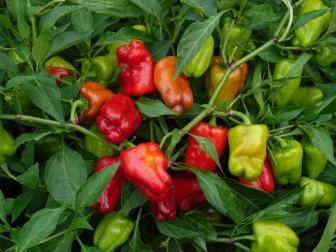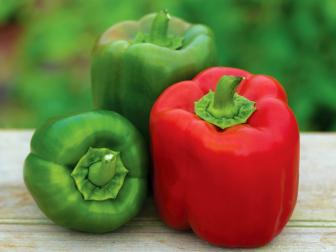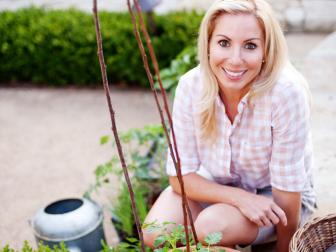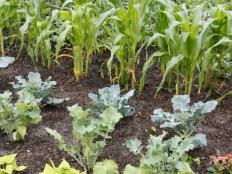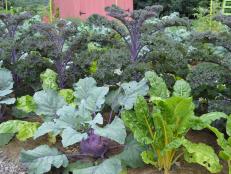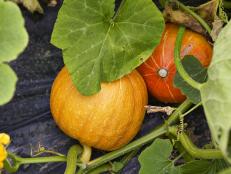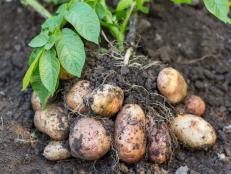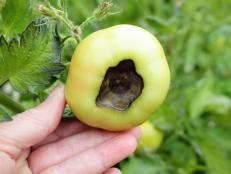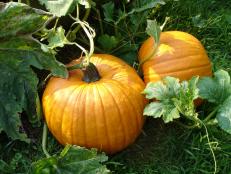How to Grow Jalapeños
Why do we love the fiery burn of a fresh jalapeño? Because these spicy chili peppers taste so good and are easy to grow.
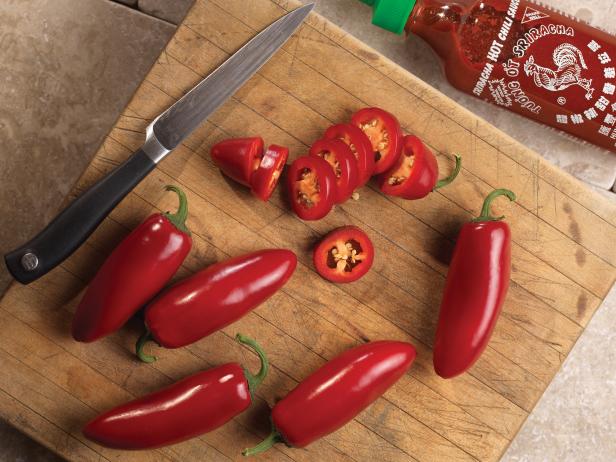
Ball Horticultural Company
Stir up a delicious hot sauce with 'Sriracha' jalapeños, vinegar, garlic and salt. Toss in a little brown sugar to turn down the burn.

You don't have to be a fan of spicy-hot foods to love jalapeño peppers, because some are relatively mild, but you can find varieties that bring the heat if you want it.
Jalapeños are cultivars of the Capsicum annuum species and members of the nightshade family. They're essentially the same as chilis, but hotter. A chemical compound called capsicum, concentrated in the membrane around their seeds, gives them their heat, which is also found in their flesh, pith and seeds.
Just how hot are these fruits? (Botanically speaking, they're fruits, not vegetables.) The Scoville scale, invented in 1912, measures the relative hotness of chilis in Scoville Heat Units (SHU).
Rebecca Sears, chief gardening guru for Ferry-Morse, says the scale "ranges from the sweet bell pepper at 0 (no heat) to the 'Carolina Reaper,' which clocks in at a fiery 1,400,000 to 2,000,000 heat units. Jalapeños typically range between 2,500-8,000 heat units on the scale." That's a little hotter than a poblano, she adds, and the chipotle, "which is not a true pepper type, but a fully ripened jalapeño that has been smoked and dried."
Planting and Growing Jalapeños
It's easy to grow jalapeños if you give them enough water, full sun and good soil.
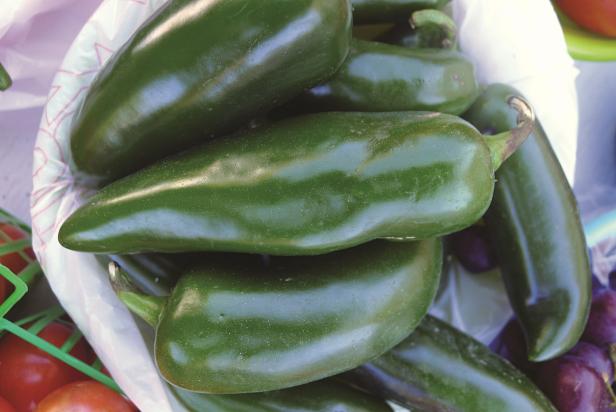
Ferry Morse
Keep hot and sweet peppers apart so they don’t cross-pollinate. Also, don’t plant where tomatoes, peppers or eggplants previously grew, to avoid diseases lingering in the soil.
When Do Jalapeños Grow Best?
Jalapeños are warm-weather plants, so they grow best when daytime temperatures are about 75 to 85 degrees and the soil temperature is at least 65 degrees. They can't survive even a light frost.
Should I Add Organic Matter?
Wait until your garden soil is dry to loosen it 8 inches deep. Remove grass, sticks and other debris and mix in plenty of organic matter. Jalapeños need a soil pH between 6.0 to 6.5, so you may want to do a soil test to see if you need any amendments.
Should I Start Jalapeños Indoors?
Sowing seeds indoors is better than starting them outdoors. Because of their need for warmth and their long germination time, you'll get a jump on the growing season. However, it's easier to plant jalapeño seedlings directly into the garden when the weather conditions are right. Just plant them 18 to 24 inches apart and no deeper than they were growing in their nursery pots.
If you start with seeds, sow them 1/4-inch deep in a moistened seed-starting mix about 8 to 10 weeks before your last expected frost. Put them on a seed heating mat or in a location that stays between 65 and 80 degrees. They'll need about 16 hours of natural or artificial light a day until they sprout, typically in 14 to 21 days. Keep the soil moist, not soggy.
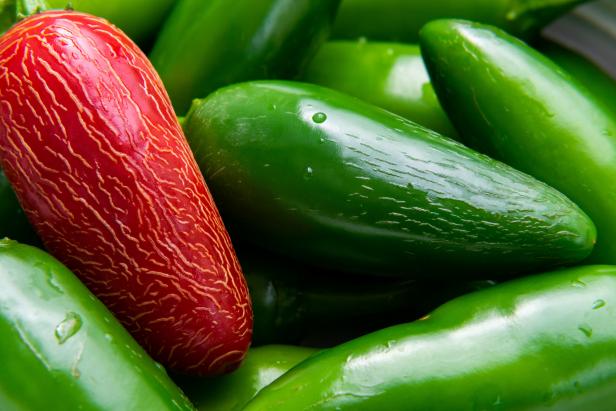
Ferry Morse
Jalapeño skins can crack when the fruits mature or stretch because they grew fast. Ferry-Morse chief gardening guru Rebecca Sears says, "Cracking is considered a desirable trait in Mexico because it can sometimes indicate the pepper will be especially hot."
Once the danger of frost has passed and the seedlings are 6 to 8 inches tall, move them outdoors to a sheltered spot every day for a period of 7 to 10 days. Do this for an hour or two on the first day, gradually increasing the time each day. When the jalapeño seedlings are conditioned to the outdoors, transplant them into the garden, planting them every 18 to 24 inches.
Water
Jalapeño plants need a couple of inches of rainfall or water from your hose each week.
Fertilize
Feed your jalapeño plants with a balanced organic fertilizer six weeks after planting and again after they flower. Repeat about every two weeks. Follow the label directions for how much to apply. You can stake or cage them for support.
Weed
Keep your plants weeded and mulched to help hold moisture in the soil and reduce competition for water and nutrients.
Scout for Health Issues
If possible, grow disease-resistant varieties or treat diseases and pests as soon as they appear. If you have to remove infested or diseased plants, don't compost them. Destroy them.
Companion Planting for Sweet and Hot Peppers
Homegrown sweet and hot peppers top most gardeners' wish lists for the summer garden. Learn companion planting techniques that may protect your peppers from pests and boost your harvest.
Choosing Which Jalapeños to Grow
Growing jalapeños, which are indigenous to Mexico, is largely a matter of deciding how hot you want them.
'Tam' - This mild variety, which grows 2 to 3 feet tall, was named for Texas A&M University, where it was developed. The jalapeños mature between 3 and 6 inches long in 80 to 90 days from planting and can be pickled, stir-fried, made into sauces and salsa or used to spice up dishes.
'Early' - Great for growing jalapeños in pots, 'Early' has a compact growth habit. The dark green fruits reach 3 inches long and can be left unpicked to turn red and develop medium heat. Use them for pickling or Tex-Mex recipes.
'La Bomba II' - These very large peppers have dark green skins, a touch of sweetness and a medium-hot taste. Each full-grown jalapeño plant can reach 32 to 40 inches tall and may need trellising. The thick-walled jalapeños mature in 56 days.
Growing jalapeños is largely a matter of deciding how hot you want them.
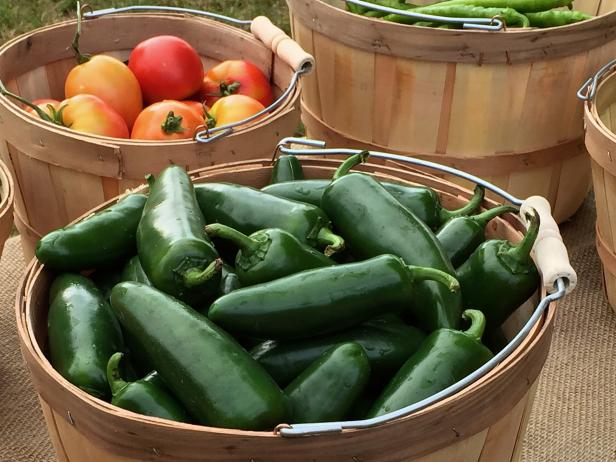
Ball Horticultural Company
'La Bomba II' has heavy foliage, which helps protect the growing jalapeños from sunscald.
'Sriracha' - Try this hybrid jalapeño for large peppers that ripen in 80 to 95 days. The mature, dark red peppers are 5 inches long with thick walls and are mildly hot, at about 2,300 to 2,500 SHUs. Often made into Sriracha sauce, they can also be roasted, pickled or sliced for eating fresh.
'Mucho Nacho' - This hybrid, high-yield jalapeño matures in 68 to 70 days. The 4-inch fruits are heavy and thick-walled. They're hotter than standard jalapeños, at 4,500 to 6,000 SHUs.
'Senorita F1 Hot' - In 80 days from planting, these jalapeños turn dark green for harvesting. Left on the plants, they become purple and then red and register about 5,000 on the Scoville scale.
NuMex 'Orange Spice' - These relatively new peppers are both pretty and moderately hot with a juicy, citrusy flavor. They're easy to grow and small enough for containers, topping out around 2 feet tall. Harvest the fruits in 65 days. Also available: NuMex 'Lemon Spice,' a very hot jalapeño that ripens to yellow.
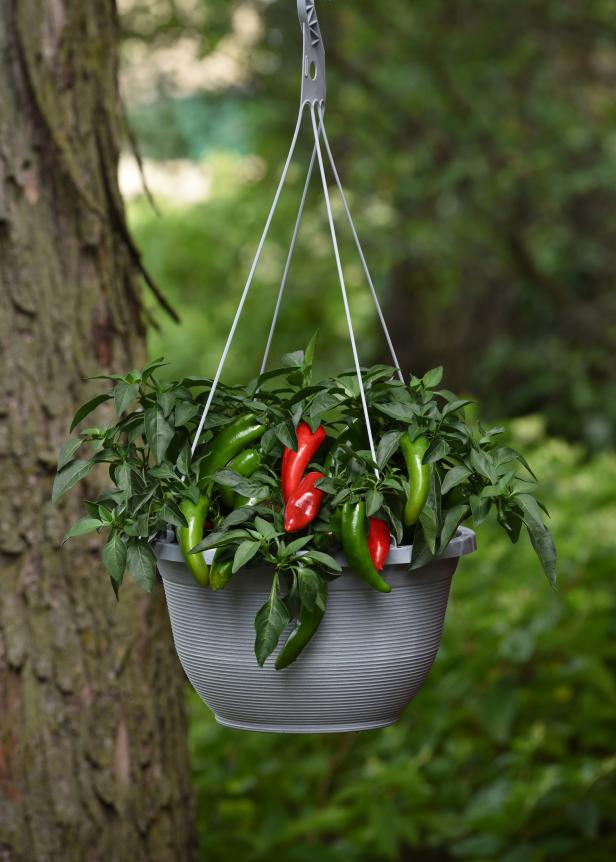
PanAmerican Seed
Baskets and other containers keep 'Pot-A-Peno' jalapeños within easy reach. The 3 to 4-inch peppers hang down on plants that top out at 12 to 15 inches.
Growing Jalapeños Indoors
Growing jalapeños in pots indoors is possible if you have enough bright light, such as from a south-facing window. Use a 3-gallon container with drainage holes. An exception to this rule of thumb is if you're growing compact, mounded jalapeño plants like 'Pot-A-Peno,' which thrive in hanging baskets or small containers.
Fill the pot with potting mix and add the plant at the same depth it was growing in its nursery pot. Gently tamp down the soil and water. Pour off any excess.
Avoid growing jalapeños in pots near vents or drafts, and water when the top inch of soil gets dry. When the weather is warm enough, your pots can go outside. Bring them back in before the first frost if you want them to keep growing.
Harvesting Jalapeños
To avoid burns from capsicum, wear gloves when handling jalapeño plants and their fruits. Don't touch your hands to your face or eyes.
When to Pick Jalapeño Peppers
Not all the fruits on a plant will mature at the same time, so start picking jalapeños as they ripen. This encourages the plant to keep bearing, too.
For the best flavor, harvest when the jalapeños are glossy and dark green and before they start changing colors. You can still eat them then, but they'll be sweeter.
Harvesting jalapeños is easy. Use a sharp knife or snips to cut them off, leaving a nub of stem on each pepper. Be careful not to harm the plants. Freeze, pickle or dry the peppers, or store them loosely covered in the refrigerator for up a week.
Problems With Growing Jalapeño Plants
Aphids are sap-sucking insect pests that like to hide underneath jalapeño plant leaves. Try knocking them off with a stream of water from your garden hose (or your shower, if you're growing jalapeños indoors). If they come back, use an insecticidal soap or Neem oil, or spray both sides of the foliage with a mixture of one teaspoon of dishwashing soap and 32 ounces of water.
What’s Wrong With My Peppers? 14 Photos
Learn about common pepper problems — along with a few tips to make things right.
Mites distort, twist and discolor leaves. They're hard to see and almost impossible to get rid of, so destroy any infested plants.
Anthracnose is a fungal disease that spreads in warm, damp weather. It shows up as soft, sunken spots on fruits, leaves or stems. Fusarium wilt is another fungus, and it makes leaves turn yellow and wilt. For both diseases, remove affected plants and destroy them.
Cutworms, pepper hornworms and other worm-like caterpillars feed on jalapeño plants. Wear gloves to pick them off by hand or spray with soapy water or Neem oil.
Flea beetles and other beetles often feast on jalapeño seedlings. Row covers, sticky traps or mulch can help deter them. To banish cucumber beetle larvae that feed on tender, young roots, weed around your jalapeño plants so they don't have a place to live.

.-Battle-on-the-Beach-courtesy-of-HGTV.-.jpg.rend.hgtvcom.196.196.suffix/1714761529029.jpeg)




